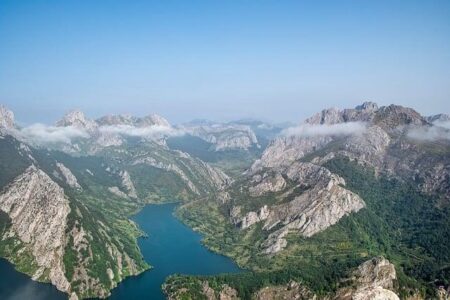Exploring Zimbabwe’s Economic Dynamics: A Focus on Mining and Agriculture
As Zimbabwe embarks on its journey of economic recovery amidst numerous obstacles, attention is drawn to two pivotal sectors: mining and agriculture. Once recognized as Africa’s breadbasket,the agricultural sector in Zimbabwe grapples with a myriad of challenges,including land reform controversies and the repercussions of climate change. Concurrently, the mining industry—rich in mineral resources—offers a beacon of hope for economic revitalization. This article delves into the current state of Zimbabwe’s economy by examining how these two essential industries interact and influence each other while considering factors that will shape their future in a nation striving for stability and growth.By incorporating insights from economic analysts and local stakeholders, we investigate how Zimbabwe can leverage its natural resources to rejuvenate its economy and enhance citizens’ livelihoods.
Understanding Zimbabwe’s Economic Dynamics Amidst Challenges and Potential
The economic framework of Zimbabwe presents a blend of challenges and potential that influences its growth path. A history marked by hyperinflation,political turmoil,and deteriorating infrastructure has created a challenging business environment. Key sectors like agriculture and mining, vital to the national economy, face their own set of difficulties. Despite possessing an array of valuable minerals such as gold and platinum, the country struggles with insufficient investment levels coupled with outdated technological practices. Furthermore, an agricultural sector once celebrated for its productivity is now experiencing reduced output due to land reforms alongside erratic weather patterns raising alarms about food security.
Nevertheless, emerging opportunities could reshape Zimbabwe’s economic landscape substantially. Recent government initiatives aimed at stabilizing the economy while attracting foreign investments are beginning to show positive outcomes. Efforts to revitalize the mining industry, including collaborations with international firms along with enhanced regulatory frameworks are underway. In agriculture too, modern farming techniques combined with irrigation projects hold promise for improved yields. As various stakeholders engage in discussions aimed at resolving systemic issues collaboratively,there exists potential for sustainable growth moving forward.
| Sectors | % Contribution to GDP | Main Resources Available |
|---|---|---|
| Agriculture | 10% – 15% | Crops & Livestock Products |
| Mining Industry | 10% | </> |
| </> td></> td></> |
>
>
Revitalizing the Mining Industry: Approaches for Sustainable Development
The fluctuating global commodity prices alongside changing regulatory landscapes present both challenges and also opportunities within Zimbabwe’s mining sector which can rebound through innovative strategies focused on sustainability.<Strong Investing in cutting-edge technologies is crucial; this enables companies not only to boost productivity but also minimize environmental footprints.</Strong Additionally,<Strong collaboration with local communities fosters better relationships ensuring that mining operations contribute positively towards local economies.</Strong This mutually beneficial approach enhances both industry performance while improving community welfare.
The government plays an instrumental role by reforming policies that ensure operational viability without compromising ecological integrity.<Strong Establishing obvious regulations along with incentive structures promoting environmentally friendly practices can redefine mining narratives within Zimbabwe.</Strong The following strategies highlight key areas necessary for revitalization:
-
>
- < Strong Funding green technology initiatives: Encouraging investments into renewable energy solutions.
> - < Strong Community engagement: Involving locals during decision-making processes.>
- < Strong Training programs: Equipping workforce skills focused on sustainability transitions.
Through these measures,Zimbabwe has an opportunity not just towards sustainable mining but also setting benchmarks across neighboring nations regarding responsible resource management.
Building Agricultural Resilience: Strategies To Boost Productivity And Food Security
In light Of climate change impacts,economic fluctuations,and land tenure complexities enhancing agricultural resilience becomes paramount ensuring sustained productivity whilst safeguarding food security.Farmers increasingly embrace<strong sustainable methods emphasizing soil health advancement water conservation biodiversity promotion.Key approaches include:
- Implementing<strong crop rotation intercropping techniques enhancing soil fertility;
- Utilizing<strong drought-resistant crop varieties adapting climatic changes;
- Investing modern irrigation systems optimizing water usage;
- Promoting agroforestry restoring degraded lands providing alternative income sources;
Governmental private-sector efforts play critical roles fostering environments conducive supporting resilient practices.Training programs educating farmers effective methodologies maximize yield potentials.Furthermore financial support mechanisms microcredit schemes cooperative funding empower farmers invest advanced technologies inputs.Collaboration among communities NGOs governmental bodies remains vital:
<li Strengthening supply chains ensuring timely access essential resources;
<li Facilitating market access smallholder farmers;
<li Enhancing research development investments agriculture;<th Strategy<th Description
<tr /thead /tbodyDrought-resistant crops<td Crops bred withstand dry conditions securing food availability; <tdAgroforestry<td Combining agriculture forestry creating sustainable land-use systems; <tdModern irrigation systems<td Efficient setups reducing water wastage increasing crop yields; <h2 id= "conclusion" The Conclusion
In summary,Zimbabwe's economy represents intricate dynamics woven together through rich mineral heritage agricultural prospects.Although facing important hurdles such as instability infrastructural deficits vast mineral wealth if managed effectively could underpin robust recoveries.The agricultural domain remains crucial addressing food security driving rural advancements.As stakeholders navigate forward prioritizing sustainability innovation harnesses natural wealth fostering resilient frameworks becomes imperative.The world watches closely observing howZimbabwe transforms fortunes securing prosperous futures citizens alike







